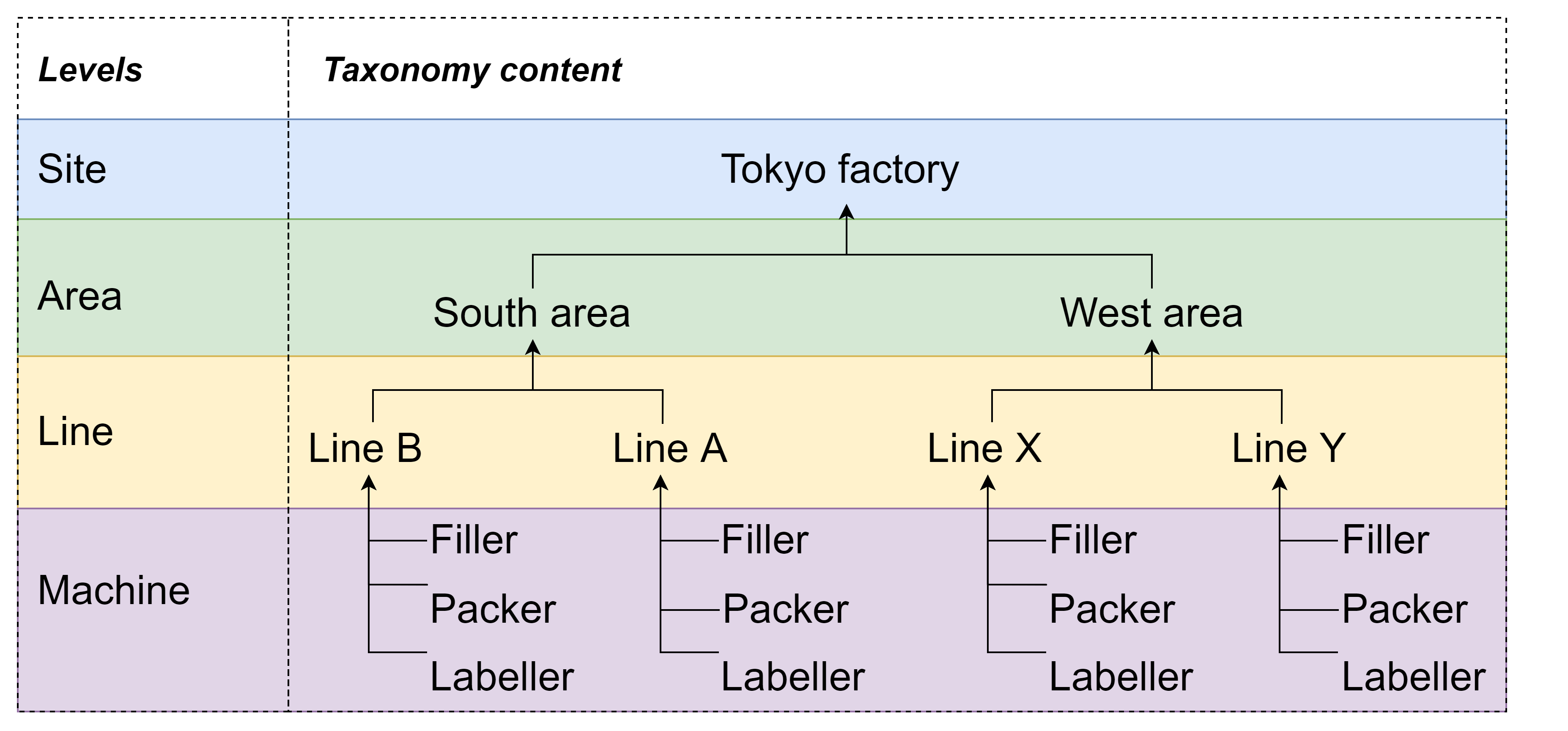| Info |
|---|
Applies to LogiX v. 3.10 and above |
One of the challenges in implementing a universal platform in a given organization is adapting it to its specific requirements without sacrificing overall consistency. This applies to both the application interface and data organization.
In the domain of the LogiX platform examples are:
Machines Downtimes classification, for purpose of detailed OEE losses reporting
Machines Downtimes classification which guides users during downtime registration
Classification of machines in terms of their function or role in the production process
Classification of machines in terms of their mechanical or electrical characteristics
One of the new upcoming core features A core feature of the LogiX platform addressing these issues is a concept called "Taxonomies".
We will introduce it gradually. In the upcoming release, it will manifest as the possibility to have a specific classification for:
production events ("problems" in PackOS language) which will extend the build-in, standard one.
factory structure (i.e classification of lines alternative to default ISA-95 plant/area/line/machine structure).
This version will not yet allow for creating and managing custom taxonomies from the user interface.
Taxonomies are arbitrarily defined hierarchical dictionaries for systematic organization and classifications of facts and entities represented in LogiX. Examples are:
Grouping production lines into categories according to organizational aspects other than ISA-95 factory structure (Site/Area/Line/Machine).
Grouping downtimes into categories according to organizational resources needed to resolve them.
Grouping machines into categories according to their kind and functional characteristics (e.g Sorters, Fillers, Packers, Labelers)
| Panel | ||||||
|---|---|---|---|---|---|---|
| ||||||
Each taxonomy is defined by:
|
System classifications that are build-in into LogiX are also implemented and exposed as taxonomies. This includes:
standard ISA-95 factory structure (Site/Area/Line/Machine) which is obligatory for each Line and Machine configured in Logix. This taxonomy is used also to uniquely identify assets (i.e. while pointing root cause machine for line downtime). Levels of this taxonomy (Site/Area/Line/Machine) are read-only and cannot be altered.
standard production event (downtime) classification used to calculate OEE
Standard, 'Loss Type' categorization which is required to calculate OEE is defined as a simple list:
Utilization Loss
Availability Loss
Performance loss
Quality loss
...
This taxonomy can be optionally further customized for each Logix deployment, to meet client needs by assigning sub-categories for each kind of loss.
Now the configuration of "problems" in terms of impact on OEE is defined by assigning a given problem to a taxonomy leaf, while Tags are still used to configure other aspects of signal processing.
...
